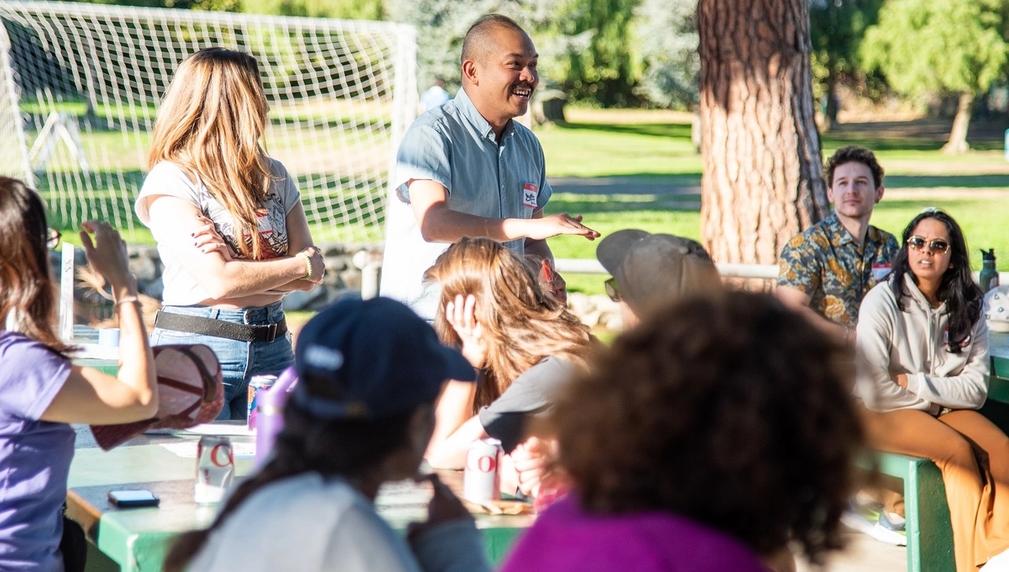A People’s Infrastructure Plan to Move LA Forward
Even as Metro invests billions into new rail lines, LA City’s infrastructure for helping people get to transit and move around (sidewalks, street lighting and shade) is in disarray. As Mayor Bass prepares the city’s first long-range infrastructure plan, LA Forward Institute has a plan to elevate the voices of our community members so we build a city that facilitates safe, quick, and easy movement across LA. We’ll host community engagement events in all 15 council districts to uplift what everyday Angelenos want out of the infrastructure plan.

What is the primary issue area that your application will impact?
Public transit
In which areas of Los Angeles will you be directly working?
City of Los Angeles (select only if your project has a citywide benefit)
In what stage of innovation is this project, program, or initiative?
Expand existing project, program, or initiative (expanding and continuing ongoing, successful work)
What is your understanding of the issue that you are seeking to address?
Los Angeles is the only major U.S. city without a Capital Improvement Plan (CIP), which is a budget and policy tool that defines a city’s vision for public space and lists the specific projects, including funding sources and timelines, to help the city realize that vision. A comprehensive plan for LA’s infrastructure is key to the success of transit. Methodically upgrading the city’s infrastructure will directly increase access and usability for potentially millions of riders. Well-maintained sidewalks and well-lit streets provide safe passage for people to access local transit options and to getting places directly by walking and biking. No one wants to use a bus or rail system if getting there is unpleasant, challenging, or even unsafe. But the current plan to create a CIP is focused on the Olympics and doesn’t envision much public engagement. Hearing from a wide variety of Angelenos is key to ensure the CIP truly serves the city’s people, and not just the needs of mega-events.
Describe the project, program, or initiative this grant will support to address the issue.
LAFI is aiming to create a robust public engagement process for the upcoming infrastructure plan.
We plan to hold 15 neighborhood visioning events – one in every council district in the city. We will start with the question, “When you take a walk around your block, describe the infrastructure in your neighborhood - sidewalks, street trees, lights, etc." Then, we will ask what local residents want changed. Using email newsletters, texts, social media, and collaborations with partner organizations and council offices to spread the word, each event will bring 50 local community members together to engage in community building, enjoy refreshments, and learn about the upcoming CIP and why it matters that their voices are heard. We will also invite local council members to each convening.
LAFI will leverage our strong relationships with partner organizations to hold successful events in neighborhoods where our base is smaller.
Our goal is two-fold: Once we complete all 15 community engagement events, LAFI will compile and synthesize the data and share an official report back with the Mayor’s CIP steering committee with potential in-person meetings and attendance at formal hearings. We will also disseminate the information on various media outlets and through our website.
Additionally, the publicity and awareness that will come from holding so many public events will demonstrate to city officials that engaging community members in the CIP process is essential.
Describe how Los Angeles County will be different if your work is successful.
If LAFI’s community engagement program is successful, the upcoming CIP, once finalized and passed, will accurately reflect the hopes, dreams, and needs of people and their families in districts across Los Angeles. Together, we will present a vision that includes well-functioning infrastructure that fully supports and encourages people to regularly use public transport. When our neighborhoods are safe, well-maintained, easy to traverse, and functioning effectively, people feel comfortable and confident accessing city services, including the Metro system.
Approximately how many people will be impacted by this project, program, or initiative?
Direct Impact: 1,250
Indirect Impact: 4,000,000